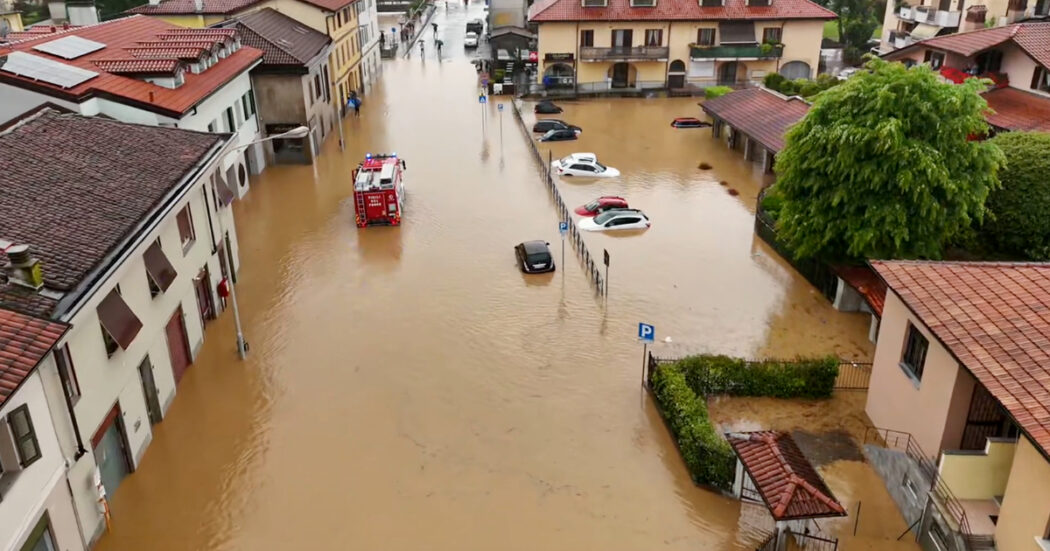The sea surface (60°S-60°N, 0-360°E) reached record high temperatures end February 2024 and early March 2024 (records going back to 1981). Sea surface temperatures look set to get even higher in March 2024. Why can sea surface temperature be expected to keep rising through March 2024?
The highest sea surface temperatures for the year are typically reached in March,
This was the case for the previous years on record going back to 1981, except for the year 2023 when the current El Niño started to emerge, resulting in the highest peak for the year occurring in August 2023.
There is a 100% probability that El Niño will be present during the 3 months from February 2024 to April 2024, according to NOAA predictions updated February 26, 2024,
Ocean heat content is rising with a rate of change that is non-linear, as illustrated by the image below, by Zack Labe.
As the ocean keeps heating up, sea ice declines. As the change in seasons causes more sunlight to reach the Northern Hemisphere, Arctic sea ice looks set for a steep decline over the next few months.
As illustrated by the image on the right, Arctic sea ice volume is at a record low for the time of year, at a time when little or no sunlight is yet reaching the Arctic.
 |
| [ click on images to enlarge ] |
As the atmosphere and the oceans keep heating up, Arctic sea ice keeps declining. With the change in seasons, more sunlight will be reaching the Northern Hemisphere and Arctic sea ice looks set for a steep decline over the next few months.
As illustrated by the image on the right, Arctic sea ice volume is already at a record low for the time of year, at a time when little or no sunlight is yet reaching the Arctic.
Meanwhile, emissions keep rising. The image below, adapted from IEA, shows the increase in energy-related carbon dioxide emissions, 1900-2023.
Without the buffer constituted by thicker sea ice, an influx of ocean heat threatens to destabilize hydrates contained in sediments at the seafloor of the Arctic Ocean, resulting in eruptions of huge amounts of methane.
 |
| [ The buffer is gone - Latent Heat Tipping Point crossed ] |
Climate Emergency Declaration
The situation is dire and the precautionary principle calls for rapid, comprehensive and effective action to reduce the damage and to improve the situation, as described in this 2022 post, where needed in combination with a Climate Emergency Declaration, as discussed at this group.
Links
• Climate Reanalyzer - daily sea surface temperature (60°S-60°N, 0-360°E)
https://climatereanalyzer.org/clim/sst_daily
• NOAA - ENSO: Recent Evolution, Current Status and Predictions (February 26, 2024 update)
https://www.cpc.ncep.noaa.gov/products/analysis_monitoring/lanina/enso_evolution-status-fcsts-web.pdf
• Ocean heat content, image by Zack Labe
• Polar Portal - Arctic sea ice volume
• International Energy Agency (IEA) - CO2 Emissions in 2023 report
• Extinction
https://arctic-news.blogspot.com/p/extinction.html
• Climate Plan
https://arctic-news.blogspot.com/p/climateplan.html
• Climate Emergency Declaration
https://arctic-news.blogspot.com/p/climate-emergency-declaration.html
https://arctic-news.blogspot.com/p/extinction.html
• Climate Plan
https://arctic-news.blogspot.com/p/climateplan.html
• Climate Emergency Declaration
https://arctic-news.blogspot.com/p/climate-emergency-declaration.html

 2 months ago
32
2 months ago
32






